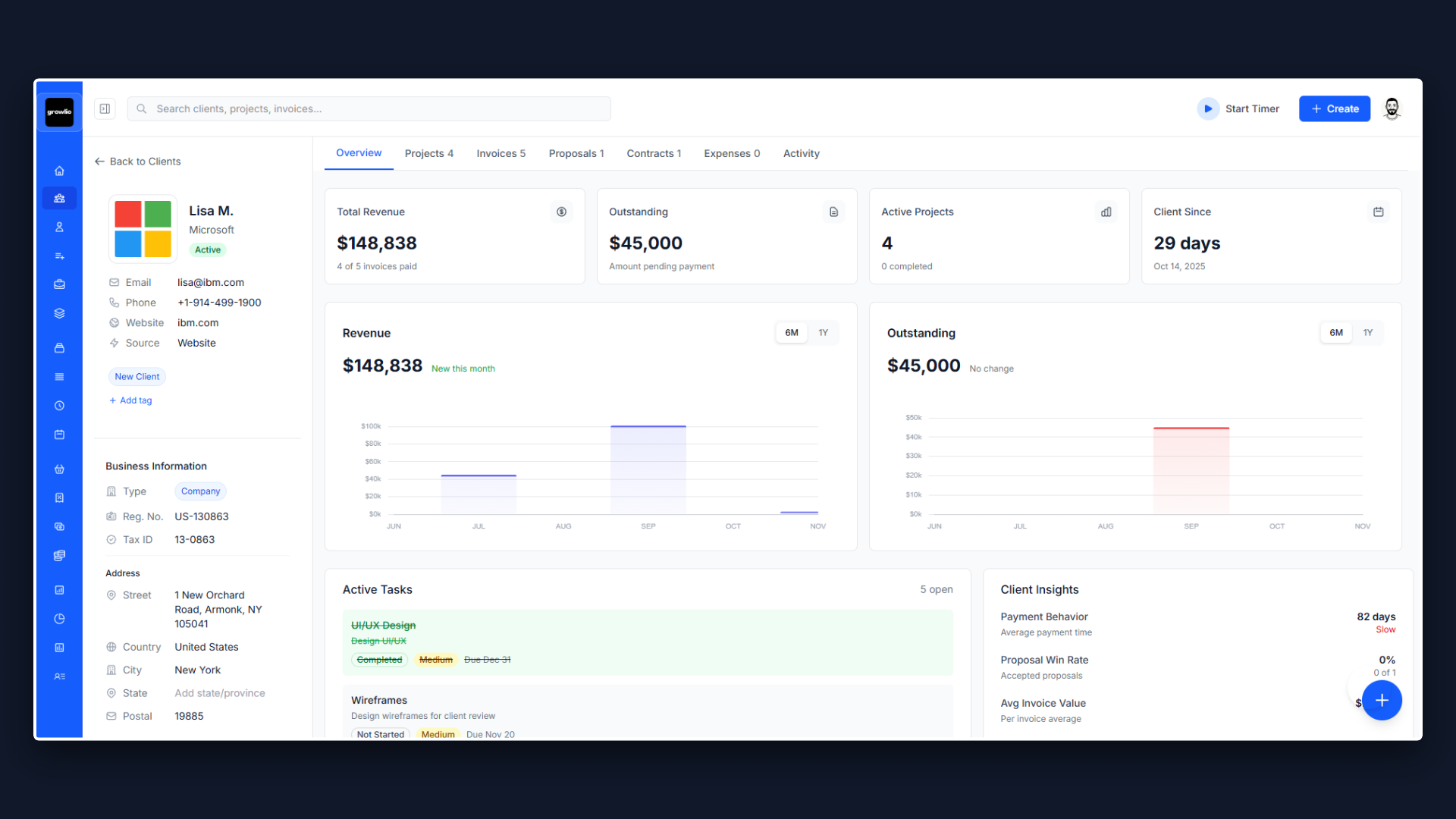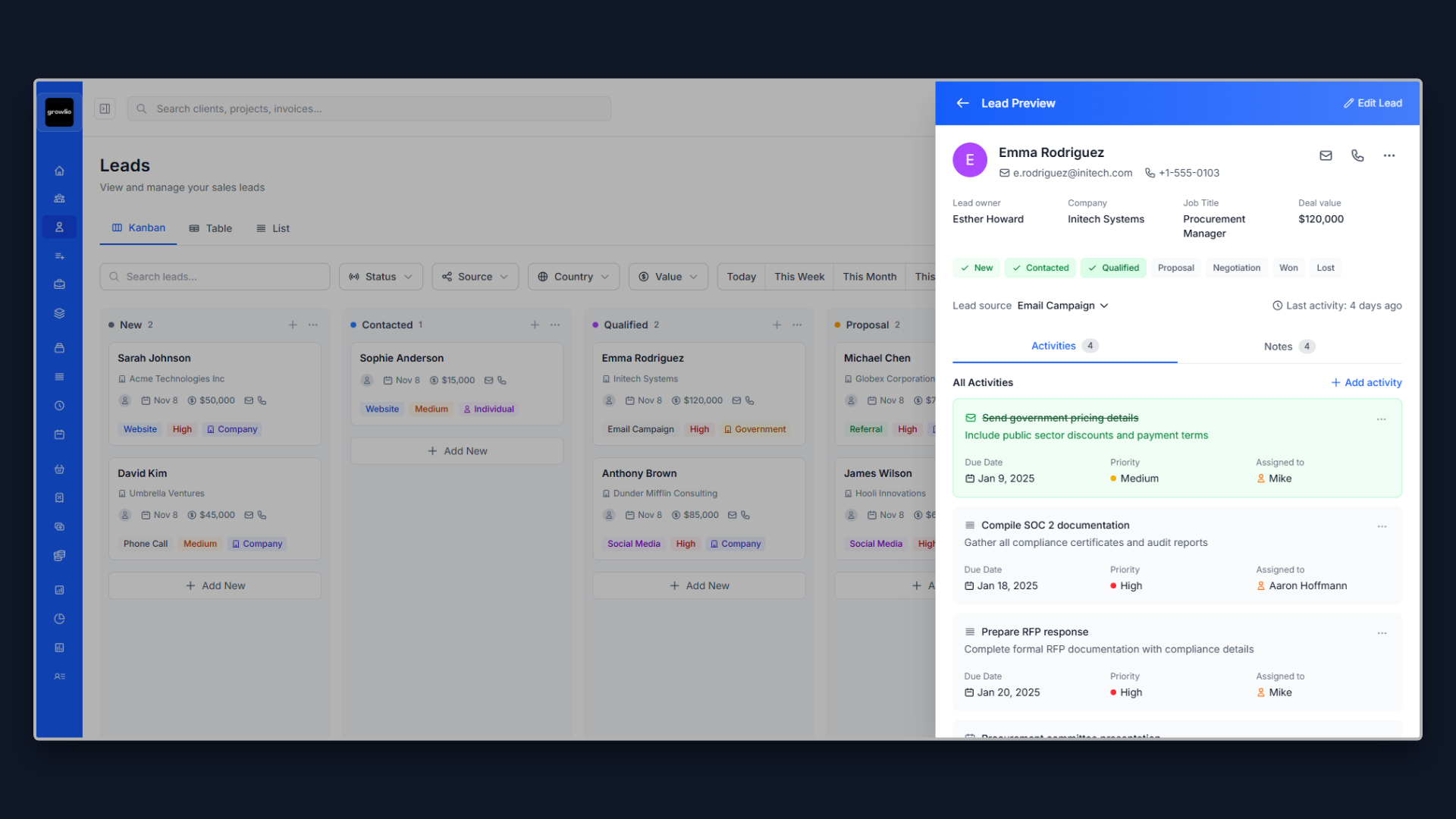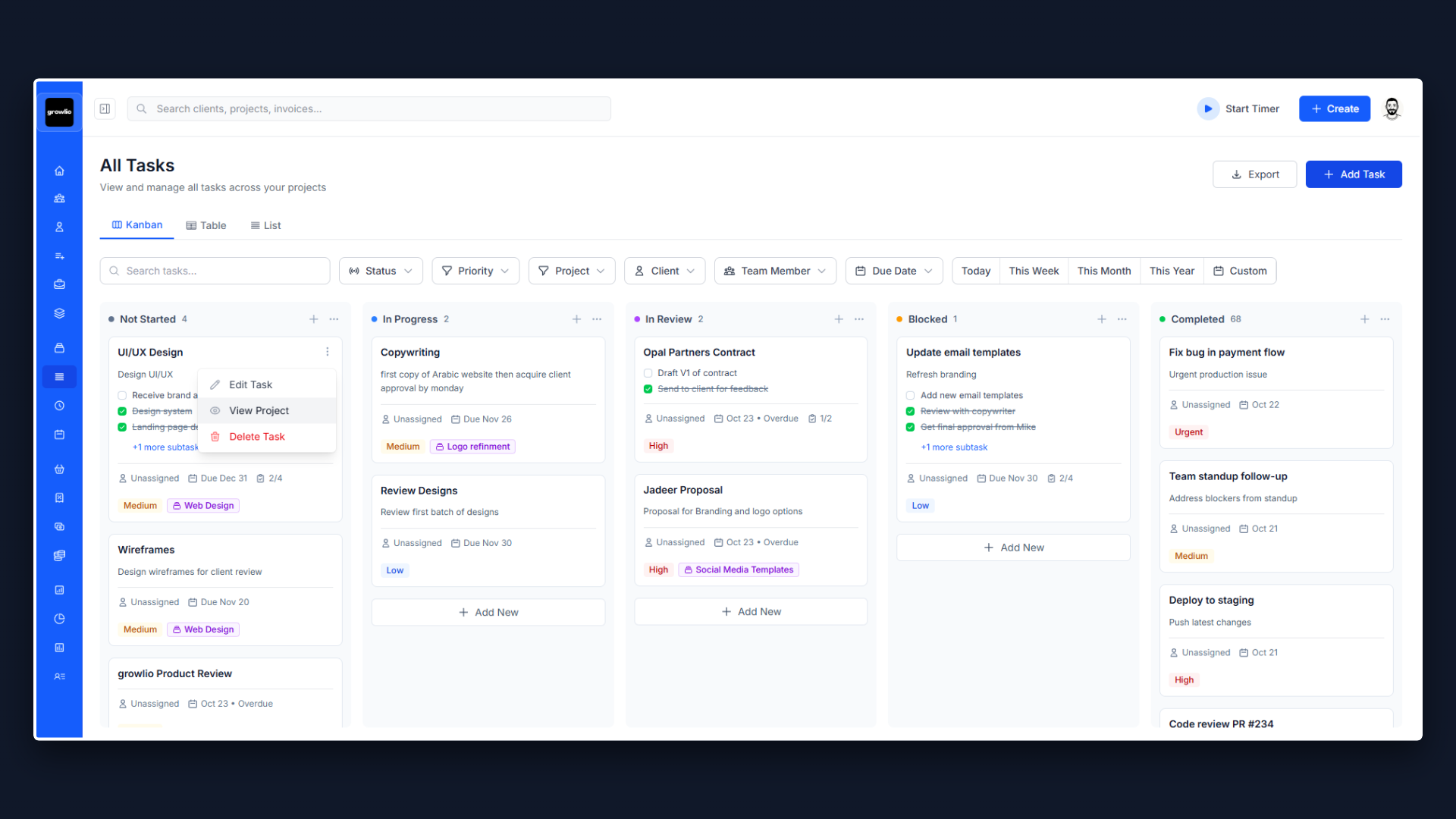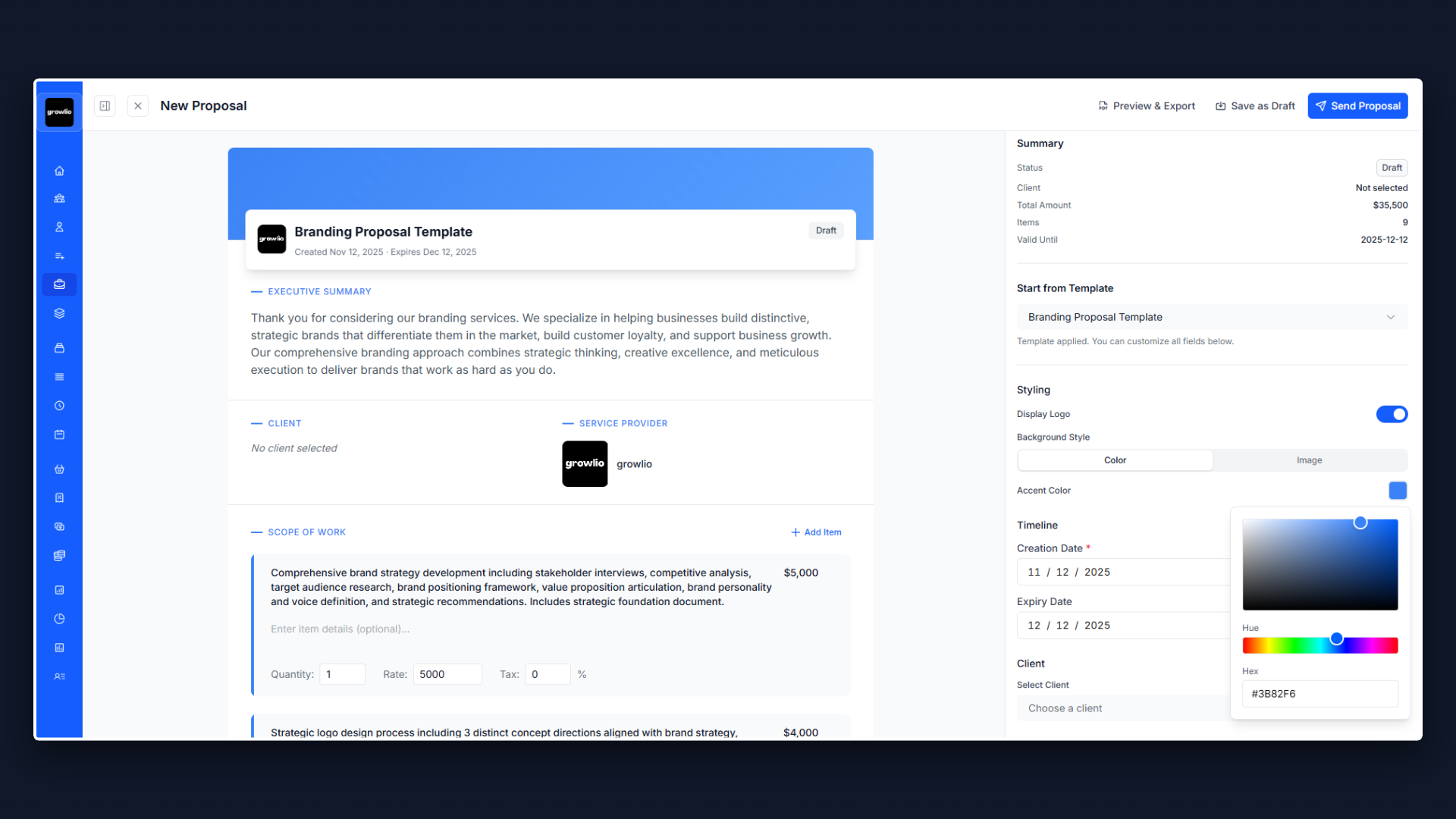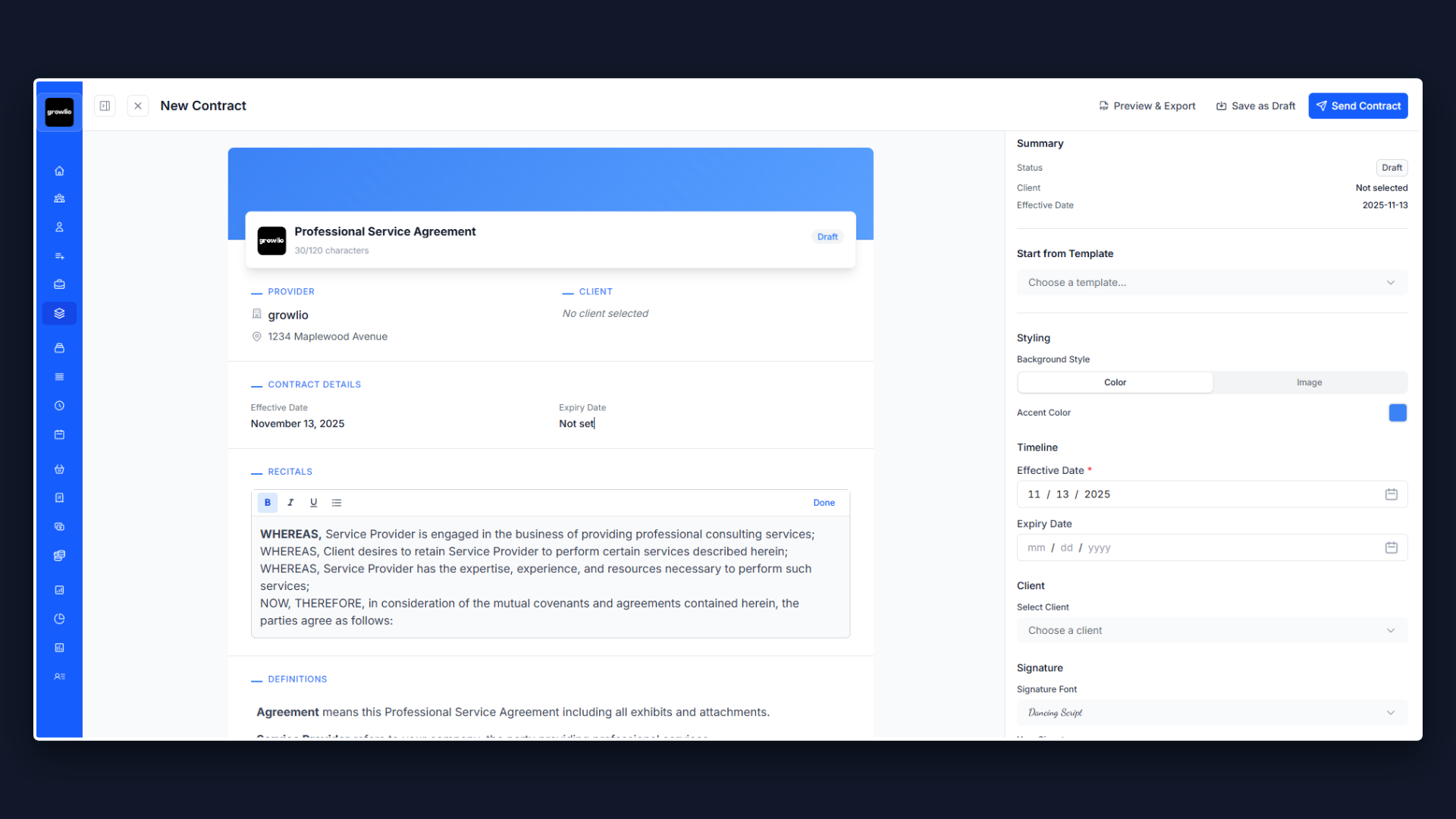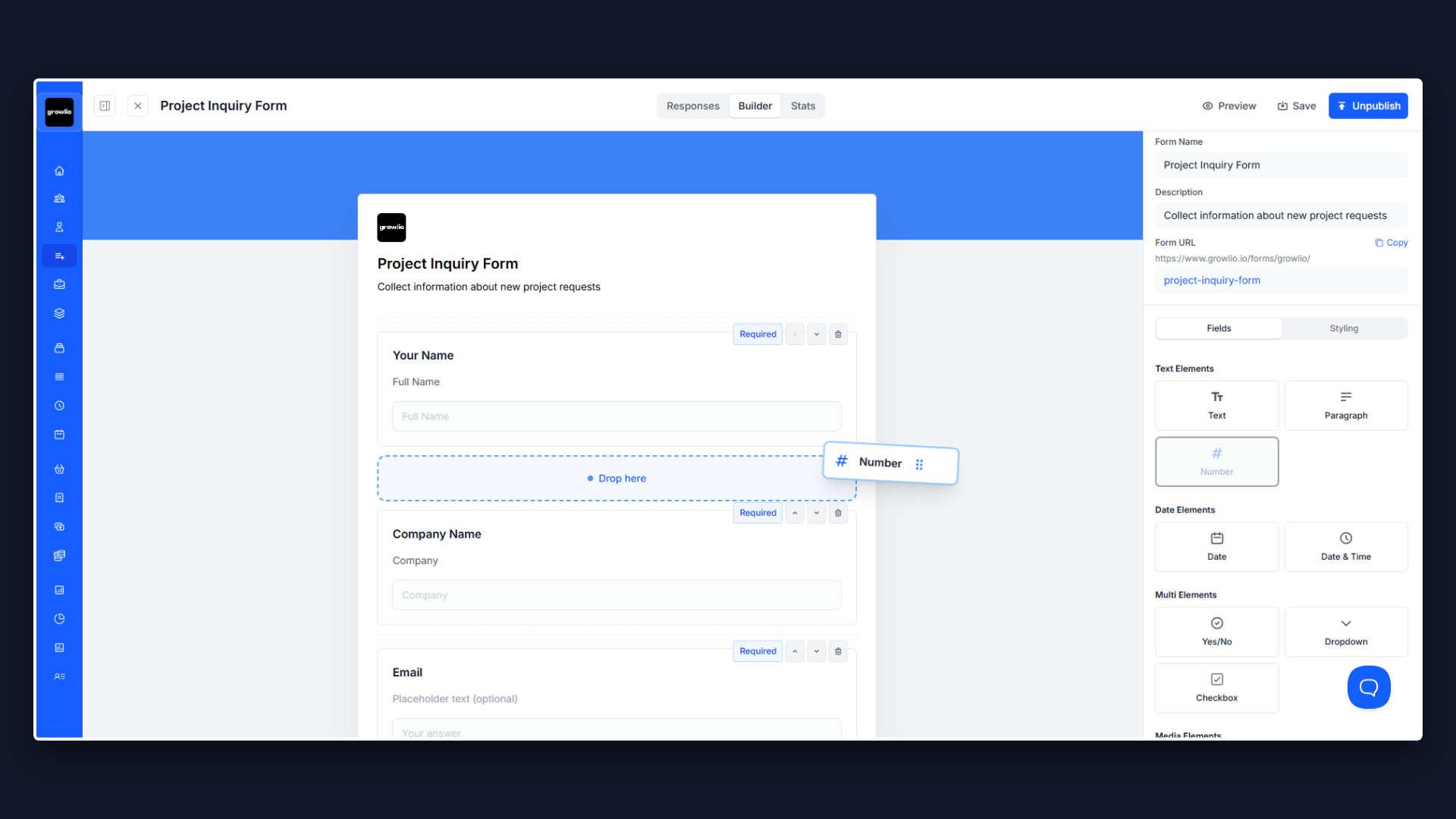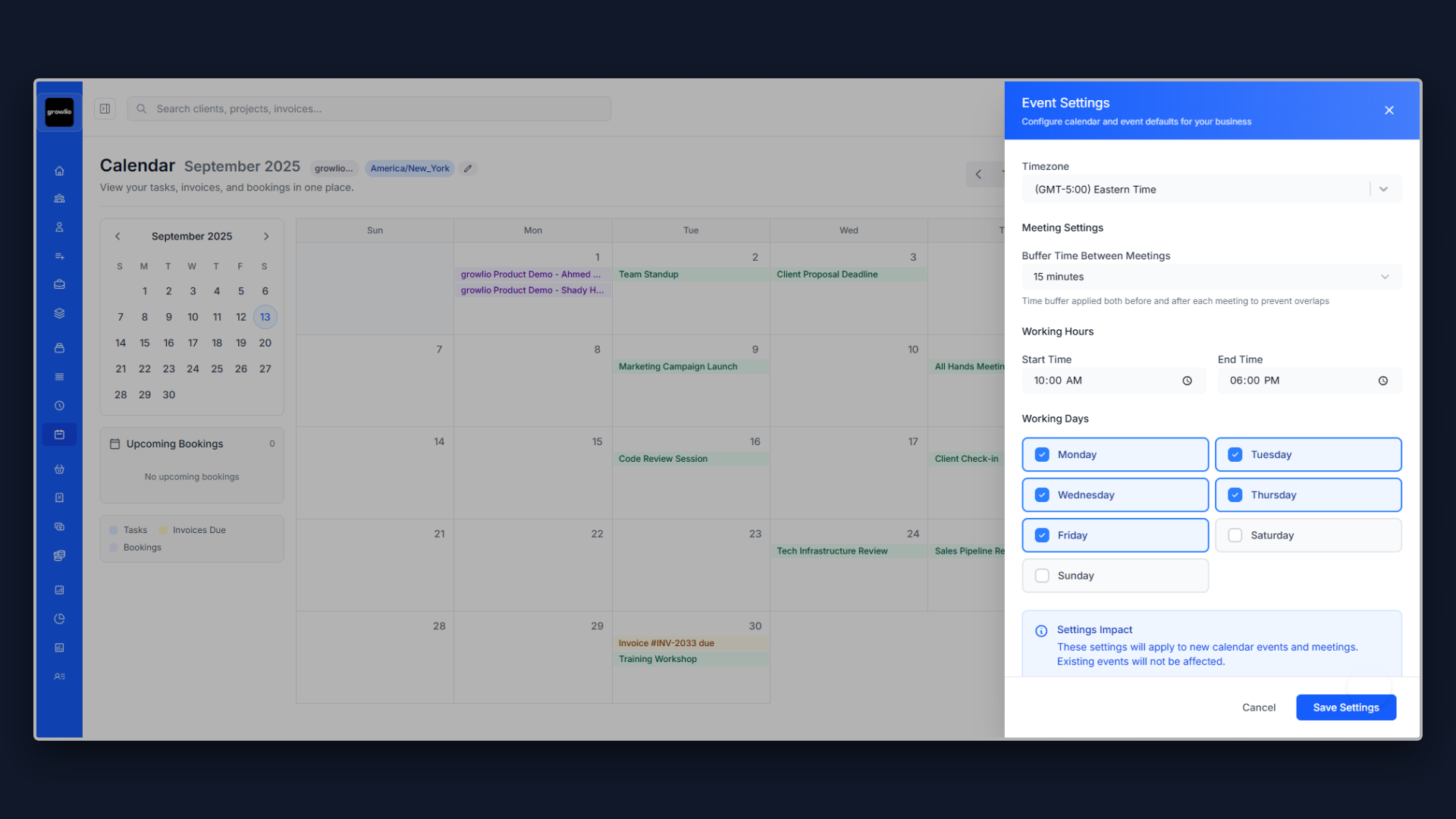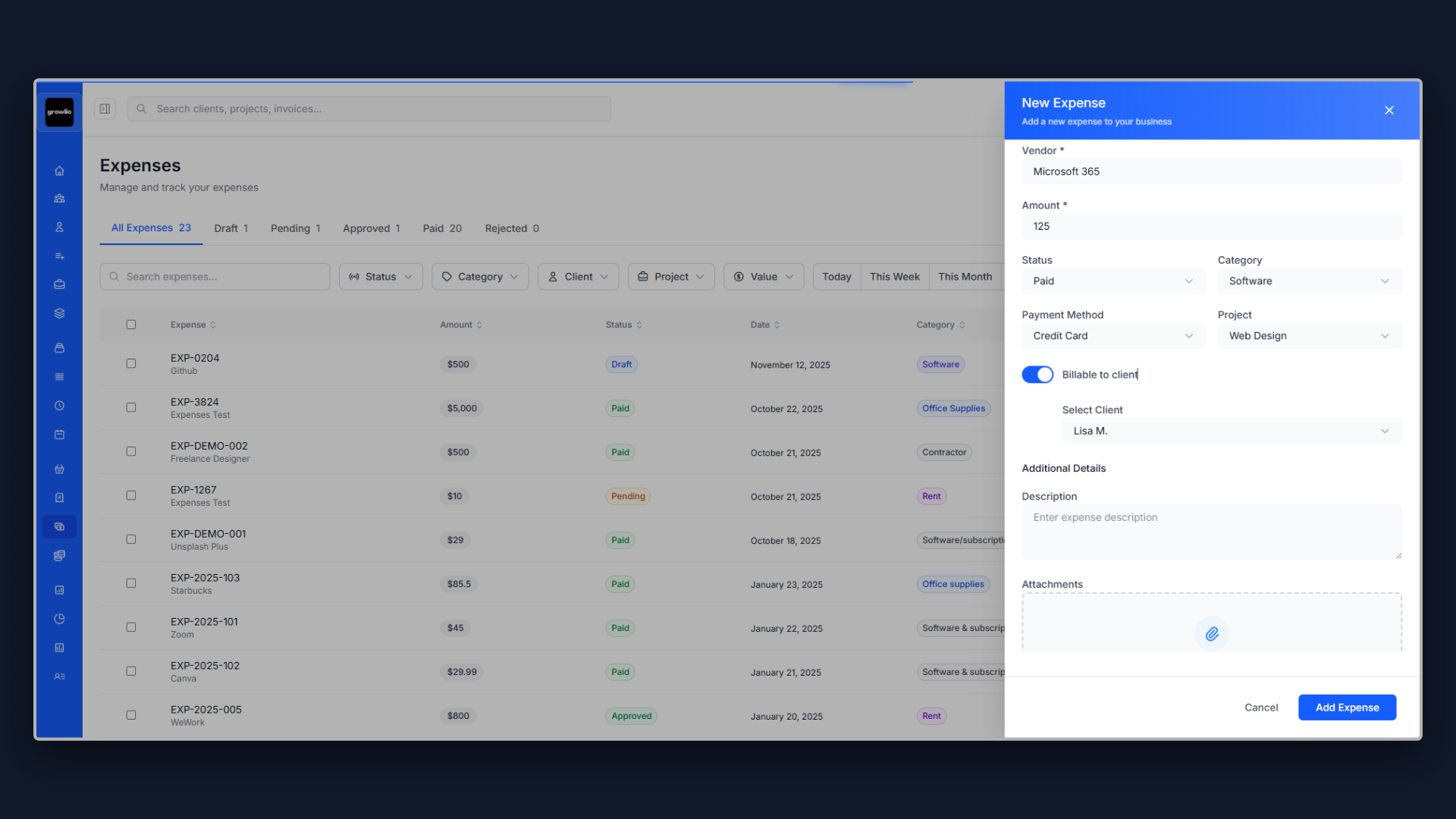Why Your PR Proposal Makes or Breaks Your Business
As a PR professional or communications agency, you know that earned media is worth 3x more than paid advertising in terms of credibility and that 92% of consumers trust editorial coverage more than advertising. But here is the harsh reality: even if you are exceptional at securing media placements and managing brand reputation, you will struggle to win clients if your proposals do not demonstrate your value clearly.
The public relations industry generates over $15 billion annually, with businesses increasingly recognizing that strategic PR drives brand awareness, credibility, and business growth more effectively than advertising alone. Yet many talented PR professionals lose contracts to competitors who simply write better proposals. This has nothing to do with your media relationships and everything to do with how you present them.
Your PR proposal is your first impression, your sales pitch, and your contract all rolled into one document. It needs to educate prospects who may not understand PR strategy while simultaneously proving you are the expert they need. This is a delicate balance that many get wrong.
1. Start With the Client's Current PR Situation, Not Your Services
The biggest mistake PR professionals make is leading with a list of services: "We offer press releases, media outreach, crisis management..." Your prospect does not care about your services yet. They care about their problems.
Start your proposal by demonstrating you understand their specific PR situation. Are they invisible in media with no coverage? Are competitors dominating the conversation in their industry? Do they lack a crisis communication plan leaving them vulnerable? Are they struggling with negative press or reputation issues? Have they never worked with PR and do not know where to start? Address these pain points explicitly.
For example: "Our analysis shows your company has received zero media coverage in the past 12 months despite launching two significant products and expanding to three new markets. Meanwhile, your top 3 competitors have secured 45+ media placements in tier-1 publications including TechCrunch, Forbes, and Wall Street Journal. This media silence means you are missing opportunities to build credibility, reach new audiences, and position your CEO as an industry thought leader. A strategic PR program could generate 15-25 quality media placements in the first 6 months, reaching an audience of 5-10 million potential customers and establishing you as a market authority."
This approach immediately shows you have done your homework and understand what is at stake. Now they are ready to hear your solution.
2. Include a PR Audit to Demonstrate Your Expertise
Nothing builds credibility faster than showing you have already analyzed their current PR presence and competitive landscape. Include a brief audit section in your proposal highlighting 3-5 critical issues:
Media Visibility Gaps: Zero or minimal media coverage in the past year, no presence in industry trade publications, missing from key industry conversations and trends, competitors securing coverage you could be getting, no proactive media strategy or outreach program.
Messaging and Positioning Issues: No clear company narrative or story angles for media, messaging that is too technical or jargon-heavy for journalists, no prepared company boilerplate or fact sheet, executive spokespeople not media trained, missing compelling customer stories or case studies that media wants.
Media Relations Deficiencies: No existing relationships with relevant journalists, no media list or journalist database, not monitoring media opportunities or journalist requests, reactive rather than proactive approach to PR, no follow-up or relationship nurturing with media contacts.
Crisis Preparedness Problems: No crisis communication plan in place, no designated crisis spokesperson, no prepared holding statements for potential issues, slow or ineffective response to negative situations, vulnerable to reputation damage from unforeseen events.
This mini audit serves multiple purposes: it proves you know what you are doing, it creates urgency by highlighting problems, and it makes your proposed solutions feel essential rather than optional.
3. Break Down Your PR Strategy Into Clear Phases
PR is multifaceted, but your proposal should not be confusing. Break your strategy into clear, logical phases that clients can understand.
Phase 1: Foundation & Strategy (Month 1)
PR audit and competitive media analysis, messaging framework and story angle development, media list building (targeted journalists and outlets), executive media training for spokespeople, press kit creation (company boilerplate, bios, fact sheet, images), crisis communication plan development.
Phase 2: Proactive Media Outreach (Month 1-3)
Press release writing and distribution for news and announcements, targeted media pitching to tier-1 and tier-2 outlets, journalist relationship building and nurturing, contributed article and byline opportunities, podcast and speaking opportunity securing, media monitoring and reporting.
Phase 3: Thought Leadership Development (Month 2-6)
Executive positioning strategy and content calendar, expert commentary on industry news and trends, opinion pieces and bylined articles, award and recognition nominations, industry event participation and speaking, social media amplification of media coverage.
Phase 4: Optimization & Scaling (Month 6+)
Media strategy refinement based on results, expanding into new media categories and outlets, advanced tactics (media tours, press events, exclusive interviews), measuring and demonstrating PR ROI and impact, long-term reputation management and crisis readiness.
This phased approach makes PR feel manageable and shows you have a clear roadmap for building media presence over time.
4. Set Realistic Expectations About Media Coverage and Timeline
One of the fastest ways to lose trust is overpromising results. Clients appreciate honesty about PR timelines and what is achievable.
Be explicit: "PR is relationship building and strategic storytelling. Unlike advertising where you can buy guaranteed placements, earned media requires convincing journalists your story is newsworthy and relevant to their audience. Results typically become visible within 2-3 months as relationships develop and pitches gain traction. Significant results—including tier-1 media placements—usually manifest within 4-6 months of consistent effort."
Provide a realistic projection: "Based on your industry and story potential, we project: Month 1-2: Foundation building, first press releases distributed, initial media pitching begins, 2-4 placements in industry trades. Month 3-4: Relationship momentum building, 4-6 media placements including potential tier-2 outlets, bylined article published. Month 5-6: 6-10 media placements per month, tier-1 coverage likely, podcast or speaking opportunities secured, measurable impact on website traffic and lead generation."
Address what you cannot control: "PR professionals cannot guarantee specific media placements—journalists have editorial independence and receive hundreds of pitches weekly. What we can guarantee is strategic effort: compelling story angles, persistent and professional outreach, strong media relationships, and maximizing every opportunity. Our track record shows that consistent, strategic PR effort delivers results."
This honesty builds trust and prevents unrealistic expectations that doom client relationships.
5. Explain Your Media Pitching and Relationship Strategy
Many clients do not understand how PR works beyond press releases. Use your proposal to educate them on your approach.
Explain that effective PR involves: building authentic relationships with relevant journalists (not spamming mass lists), understanding what each journalist covers and their audience, crafting personalized pitches tailored to specific reporters, providing story angles that serve the publication and readers (not just promoting you), making yourself valuable as a resource beyond your own stories, responding quickly when journalists have urgent needs or questions, and respecting editorial timelines and deadlines always.
Outline your pitching approach: "We do not blast generic press releases to thousands of irrelevant journalists. Instead, we: research and build targeted media lists (50-100 highly relevant journalists), personalize each pitch referencing their previous work, offer exclusive angles or interviews when appropriate, provide ready-to-use resources (quotes, data, images), follow up professionally without being pushy, nurture relationships over time even when we do not have immediate asks."
Give specific examples: "Instead of pitching 'Company X Launches New Product' (which journalists ignore), we pitch compelling angles like: 'New data shows 73% of marketers struggle with [problem your product solves]—CEO available to discuss industry trends' or 'Former Google executive explains why [industry trend] will transform [market] in 2025.' These angles give journalists stories their readers want, not thinly veiled ads."
This demonstrates you understand modern PR is about strategic storytelling, not press release distribution.
6. Address Press Releases and Content Creation
Press releases are one PR tactic, but clients often overestimate their importance. Educate them on your content approach.
Explain press release strategy: "Press releases are useful for distributing factual news announcements—product launches, funding rounds, partnerships, executive hires, major milestones. But press releases alone rarely generate coverage. They work best when combined with strategic pitching and journalist relationships. We write press releases that are: newsworthy and timely, following AP style and journalism standards, optimized with clear headlines and quotes, distributed through appropriate channels (wire services, email to media lists), and paired with personalized pitches to key journalists."
Outline broader content needs: "Beyond press releases, PR requires various content: media pitches (compelling email pitches tailored to specific journalists), bylined articles and thought leadership pieces, contributed quotes and expert commentary, company fact sheets and backgrounders, executive bios and professional headshots, customer success stories and case studies, data and research that journalists can cite. We create all content needed to support your PR program."
Address thought leadership: "The most valuable PR positions your executives as industry experts that journalists call for commentary. We develop thought leadership through: opinion pieces on industry trends, data-driven insights and original research, contrarian or bold perspectives that spark conversation, timely commentary on breaking news in your industry, contributed articles in tier-1 business and trade publications. Thought leadership generates ongoing coverage beyond one-time announcements."
7. Explain Your Media Monitoring and Measurement Approach
Clients need to understand how you will measure and report PR success. Be specific about your metrics and reporting.
Explain PR measurement: "PR success is measured through multiple metrics: media placements (quantity and quality of coverage), reach and impressions (estimated audience size), media tier classification (tier-1 national, tier-2 industry, tier-3 niche), message pull-through (key messages appearing in coverage), sentiment (positive, neutral, negative tone), website traffic from media coverage, lead generation attributed to PR, brand awareness and perception shifts. We track meaningful metrics that demonstrate business impact, not just vanity metrics."
Outline media monitoring: "We continuously monitor media for: coverage of your company and executives, competitor media coverage and strategies, industry trends and news you can comment on, journalist requests for sources and quotes (HARO, Qwoted), brand mentions and sentiment across media, opportunities for reactive commentary and newsjacking. This monitoring allows us to be proactive and seize timely opportunities."
Provide reporting structure: "You will receive monthly reports showing: all media placements with links and summaries, total reach and estimated impressions, media tier breakdown (tier-1, tier-2, tier-3), key message analysis and themes, competitor coverage comparison, website traffic and lead attribution from PR, upcoming opportunities and strategy, next month priorities and tactics. Clear reporting demonstrates ROI and keeps stakeholders informed."
8. Address Crisis Communication and Reputation Management
Many clients overlook crisis preparedness until it is too late. Address this proactively in your proposal.
Explain crisis importance: "Every company faces potential reputation threats—negative reviews, customer complaints going viral, executive missteps, data breaches, lawsuits, employee issues, or market crises. The difference between minor bumps and major reputation damage is preparation and response speed. Companies with crisis plans contain issues quickly; those without suffer lasting damage and loss of trust."
Outline crisis planning: "We develop comprehensive crisis communication plans including: potential crisis scenario identification (brainstorming what could go wrong), prepared holding statements for likely scenarios, designated crisis team and clear decision-making protocol, spokesperson training for crisis situations, media response protocols and timing, social media response guidelines, stakeholder communication plans (employees, customers, partners, investors). Preparation allows fast, coordinated response when crises emerge."
Address crisis response: "If a crisis occurs, we: assess the situation severity and required response level, activate the crisis team and communication protocols, prepare appropriate holding statements or full responses, coordinate messaging across all channels, manage media inquiries and requests, monitor coverage and sentiment in real-time, adjust strategy as situation evolves, conduct post-crisis analysis and learning. Our goal is protecting your reputation while being transparent and authentic."
Emphasize prevention: "The best crisis management is prevention. Our proactive PR builds reputation reserves—positive media presence and goodwill—that cushion you if challenges arise. Companies with strong reputations recover faster from crises than those without established credibility."
9. Explain Your Media Relationships and Network
Clients want to know about your media connections. Be honest about relationships while not overpromising.
Address your network: "We have established relationships with journalists covering [specific industries/beats]: tier-1 business media (Wall Street Journal, New York Times, Forbes, Bloomberg), industry trade publications ([list relevant trades]), tech media (TechCrunch, VentureBeat, The Verge) [customize based on focus], local/regional media in your markets, broadcast media (TV and radio opportunities), podcasters and online influencers in your space. These relationships were built over years of providing valuable stories, being reliable sources, and respecting editorial integrity."
Set realistic expectations: "Media relationships open doors—they make journalists more likely to open our pitches and consider our stories. But relationships do not guarantee coverage. Every story must still be newsworthy and relevant to their audience. We leverage relationships to get fair consideration and feedback, not to strong-arm coverage. Ethical PR never promises guaranteed placements because journalism does not work that way."
Explain relationship building: "We continuously expand and nurture media relationships by: adding relevant new journalists to our network as they move beats or publications, engaging with journalist content on social media authentically, offering expertise and sources even when not pitching our clients, sharing relevant industry information and data, respecting deadlines and communication preferences always, and being known as reliable, honest, and professional. Reputation among journalists is everything."
10. Include Case Studies and Proof of Results
Nothing sells like proven results. Include 2-3 relevant PR case studies in your proposal showing coverage secured and business impact.
Format them simply: Client: B2B SaaS company in cybersecurity space. Challenge: Zero media presence, competitors dominating tier-1 coverage, CEO unknown in industry. Strategy: Developed CEO thought leadership program, positioned around timely cybersecurity trends, secured speaking opportunities, pitched reactive commentary on breaches. Results: 42 media placements in 6 months including Forbes, TechCrunch, CIO Magazine, 3 podcast interviews, CEO speaking at 2 industry conferences, 35% increase in inbound leads attributed to PR visibility, company perceived as category leader in perception study.
Show coverage examples: "Attach or link to examples of coverage we have secured: tier-1 media placements with client quotes, bylined articles in major publications, broadcast interviews or podcast appearances, award wins and recognition, case studies showing business impact. Real coverage examples are the best proof of our capabilities."
Address client confidentiality: "Some clients require confidential PR where we cannot publicly disclose our work. We can share additional case studies and coverage examples in confidence during our conversation, including work with [mention client types without naming them if confidential]."
If you are newer to PR, reference: media relationships and placements from previous employment, freelance or pro bono PR work results, personal brand or startup PR success, or media contacts and outlets you have access to.
11. Transparent Pricing That Reflects Value
PR pricing varies widely by scope and retainer structure. However, vague pricing makes clients nervous.
Provide clear pricing tiers: Startup PR Package - $3,500/month: PR strategy and messaging framework, 2 press releases per month with distribution, targeted media pitching (tier-2 and tier-3 focus), media monitoring and alerts, monthly coverage report and strategy call. Growth PR Package - $6,500/month: Everything in Startup, plus expanded media outreach (tier-1 focus), thought leadership content development, 1 bylined article placement per quarter, executive media training session, crisis communication plan, enhanced reporting and analytics. Enterprise PR Package - $12,000/month: Everything in Growth, plus comprehensive PR program management, 4 press releases per month, aggressive tier-1 media pursuit, speaking opportunity coordination, award nominations and submissions, dedicated account manager, weekly strategy calls, crisis response on-call support.
Explain retainer model: "PR works best as ongoing monthly retainers because media relationships and visibility build over time. Results compound—month 6 is far more productive than month 1. We recommend minimum 6-month commitments to allow strategy to gain momentum and deliver meaningful results. One-off projects like single press releases typically do not generate coverage without sustained relationship building."
Address project-based options: "For clients not ready for retainers, we offer project-based PR: Press release writing and distribution: $800-1,500 per release, Crisis communication planning: $3,500-7,500 one-time, Media training session: $2,500 half-day, Bylined article writing and placement: $2,500-5,000, Event PR and coordination: $5,000-15,000. However, retainers deliver significantly better ROI through sustained effort."
12. Make Next Steps Crystal Clear
Do not leave your prospect wondering what happens next. End your proposal with a clear call to action and process.
"Ready to build media visibility, credibility, and thought leadership in your industry? Here is how we get started: Step 1: Sign the proposal and return it by [date] to reserve your start date. Step 2: We will schedule a kickoff call within 48 hours to dive deeper into your story and goals. Step 3: We begin PR foundation work immediately (messaging, media lists, crisis plan). Step 4: Media outreach begins by week 3, with first coverage typically within 60-90 days. Questions? Schedule a call with me at [calendar link] or reply to this email."
This removes friction and makes it easy for prospects to say yes. The clearer you make the path forward, the more likely they are to take it.
Final Thoughts on PR Proposals
Your PR proposal is not just a formality—it is a sales tool, an educational resource, and a trust-building document. The PR professionals who win the most clients are not always the ones with the biggest media contact lists; they are the ones who best explain PR strategy in a way that makes sense to business owners.
Take the time to customize each proposal for your prospect. Reference their current media invisibility, competitive coverage gaps, and specific PR needs. Show that you have done the research. Demonstrate your expertise through a PR audit and strong case studies with real coverage examples. Set realistic expectations about timeline and what earned media requires. And make it easy to say yes.
Remember: a great PR proposal proves you understand their business and industry, demonstrates you have strategic PR methodology and media relationships, shows evidence you can deliver quality media placements, and makes the investment feel worthwhile. Get these elements right, and you will win more contracts—even if your competitors have bigger agencies or lower prices.
